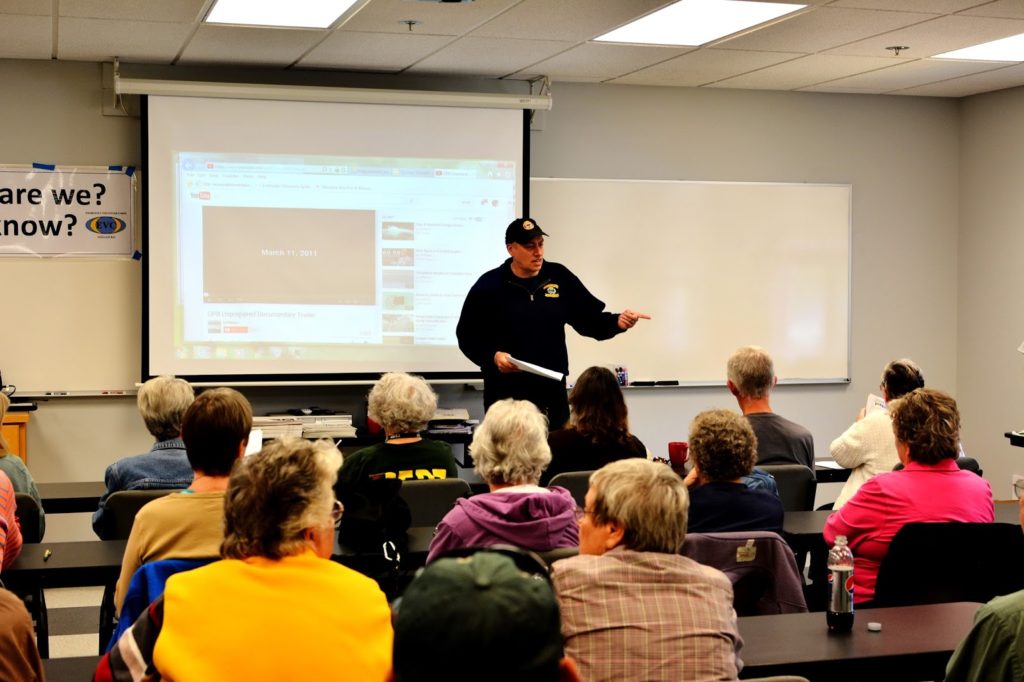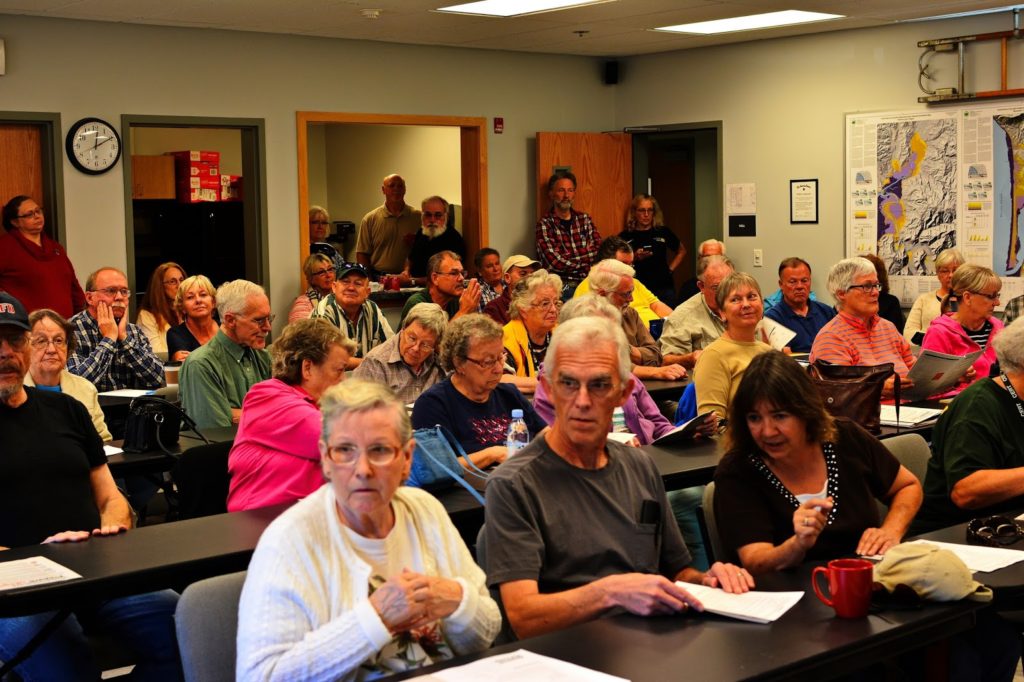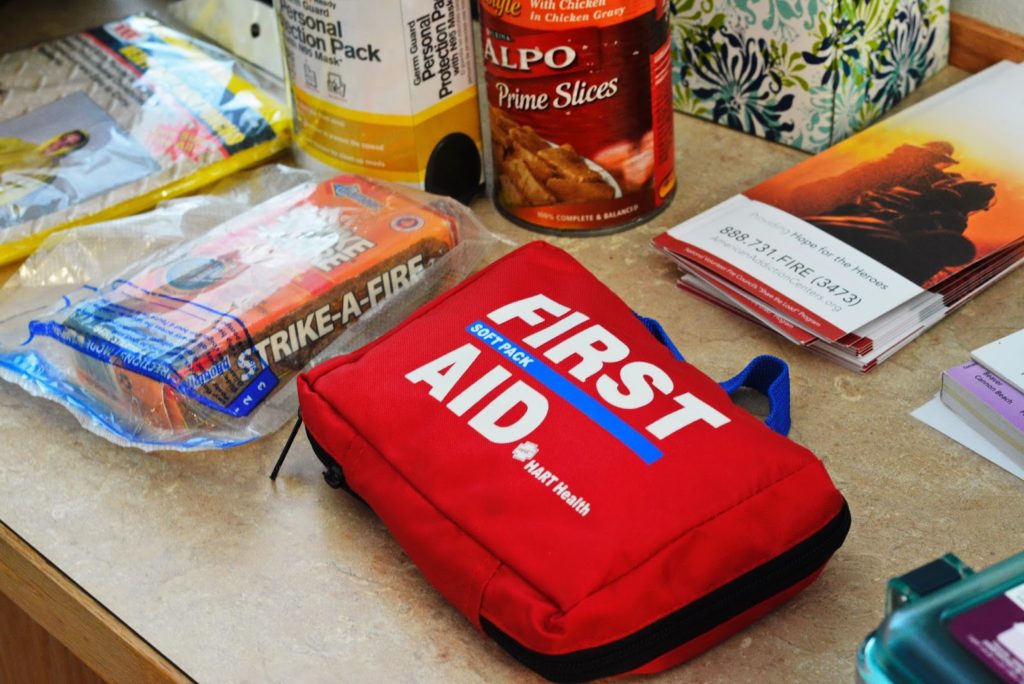A Must Have Item if You Live in the Pacific Northwest: a Go Bag
There are lots of things that will stick with you after you take an emergency preparedness class with Larry Wiedenhoft and Tim Anderson. The pair are Red Cross volunteers on the Oregon Coast and co-responders to local emergencies. They have a great sense of humor and years of combined knowledge, which translates to a not-to-miss and often fun group discussion, albeit concerning some pretty serious subjects.
 Between Larry and Tim, they’ll tell you everything you want to know about living in a tsunami zone. They’ll tell you stories about what drew them to the Red Cross (Larry is an EMT who is going to nursing school and Tim is a firefighter who is working to become an EMT), as well as what motivates them to meet with community organizers and other people who want tips on how to keep their families and friends safe in times of emergencies. They’ll also talk to you about a must-have item if you live in Oregon: a “go bag.” Larry learned just how important a go-bag can be when his coastal home was hit by a tornado in October. “The winds kept getting stronger and stronger and the noise louder and louder. We went to the center of our house because we realized it was a tornado,” Wiedenhoft said.
Between Larry and Tim, they’ll tell you everything you want to know about living in a tsunami zone. They’ll tell you stories about what drew them to the Red Cross (Larry is an EMT who is going to nursing school and Tim is a firefighter who is working to become an EMT), as well as what motivates them to meet with community organizers and other people who want tips on how to keep their families and friends safe in times of emergencies. They’ll also talk to you about a must-have item if you live in Oregon: a “go bag.” Larry learned just how important a go-bag can be when his coastal home was hit by a tornado in October. “The winds kept getting stronger and stronger and the noise louder and louder. We went to the center of our house because we realized it was a tornado,” Wiedenhoft said.
This recent, first-hand experience, coupled with the duo’s abundance of on-the-job knowledge, adds up to a truly riveting emergency preparedness class. Larry estimates that he has taught more than 100 classes in the past four years, primarily on the Coast and in Portland but also in other places, and he continues to receive requests for even more.
 Linda Kozlowski, President of the Emergency Volunteer Corps of Nehalem Bay (EVCNB), calls Larry and Tim’s go bag classes “extraordinary.” She says that’s because the classes are delivered with personality and customized in such a way that they meet participants’ needs depending on where they live. While many standard items are the same in go bags, other go bag items can vary depending on whether you live in a beach, urban, rural or mountain community.
Linda Kozlowski, President of the Emergency Volunteer Corps of Nehalem Bay (EVCNB), calls Larry and Tim’s go bag classes “extraordinary.” She says that’s because the classes are delivered with personality and customized in such a way that they meet participants’ needs depending on where they live. While many standard items are the same in go bags, other go bag items can vary depending on whether you live in a beach, urban, rural or mountain community.
Linda notes that her region has often been cited as one of the most well-prepared communities in Oregon. The key, she says, is to help people know what to do and what to pack. “Larry and Tim use their personal sense of style to make packing worthwhile,” she notes.
The EVCNB’s community classes fill up fast even with seats for up to 40 people. Since the region experienced a tornado, their popularity has continued to grow. As a result, Linda and her team have recently started offering conversations they call “go coffees“, which involve no more than 10-12 friends. “The coffees are built around camaraderie,” she says. “They are the perfect place to discuss go bag items, including hard-to-locate supplies and must-have items that can be purchased at cost through the Red Cross.”
For more information on go bags, visit www.redcross.org/kit.
So, what should you pack and how should you pack it?
Larry, Tim and the Red Cross recommend that you consider different types of go bags, which can be stored in different places depending on how you live your life. For instance, an actual bag, like a backpack, can sit on the floor under your bed, which is a good idea in case of an emergency at night. A bag can be located next to your back door, in your car trunk or at work. Bags should have a minimum of three days’ worth of supplies, which should be able to hold you over until relief operations can organize. Containers can include a duffle bag, plastic tub, garbage cans on wheels or a soft pack like the kind you take on day hikes. No matter the container, go bags should be portable.
Recommended items for a go bag include:
• Non-perishable food that you most like to eat – no less than a three-day supply. Larry makes a point of telling people to pack their favorite foods. He says chocolate, for example, can be a great stress reliever if you love it, and you might as well eat what you love when times are challenging.
• First aid kit
• Extra eyeglasses or contact lenses
• Extra medication
• Pet supplies
• Flashlight and batteries
• Cell phone and chargers (car & wall)
• Area maps
• Multi-tool, pocket knife
• Whistle
• Battery operated, solar, crank radio
• Clothing and gloves
• Copies of important documents
• A copy of your emergency plan, along with phone numbers
• Cash (ATMs may not be available following a disaster)
• Comfort items – Things that can be easily carried and help make you, your family and friends feel more at ease. Tim often jokes about toilet paper, and there’s honestly something to be said for that – although, he notes, it’s equally important to pack items such as games, stuffed animals, books and photos, depending on what makes you happy.
Last but not least, the team recommends setting aside time once a year, or as often as needed, to update go bags, as well as personal and family emergency preparedness plans. “It’s important to ensure everyone in the family knows where go bags are located,” says Larry. “Do what you need to do to make sure the task is not overwhelming. Pack step-by-step and – depending on circumstances – stock similar supplies for longer durations.
“Getting started can be the hardest part,” he says. “But the most important thing is to simply start and then make your go bags better over time. Birthday and holiday gifts can complement those items you buy at the start.”
